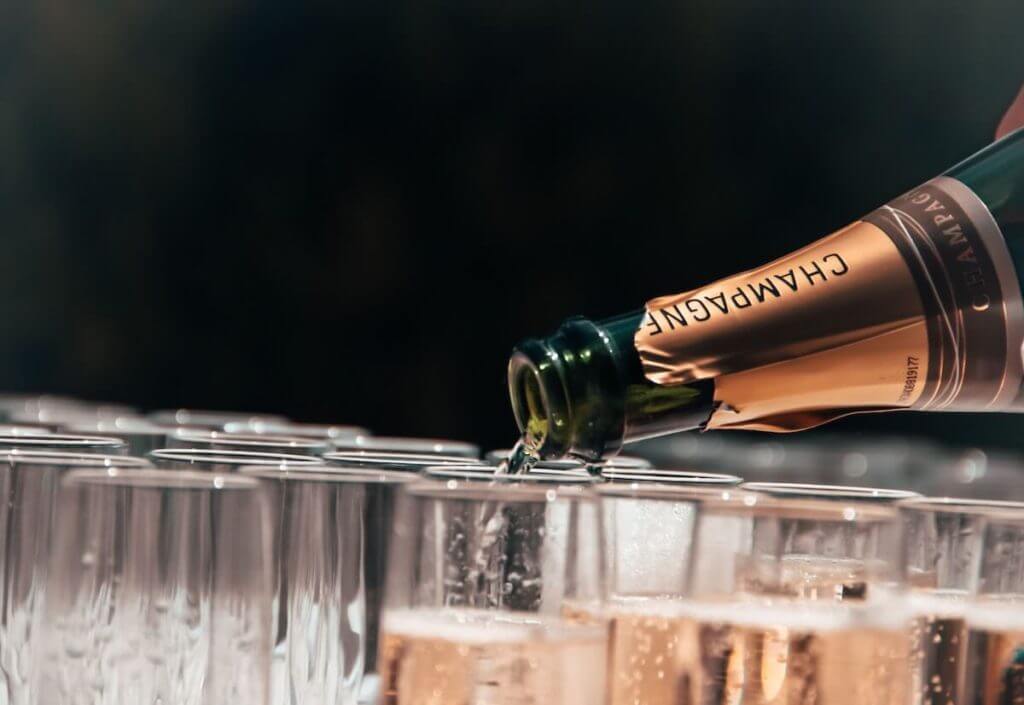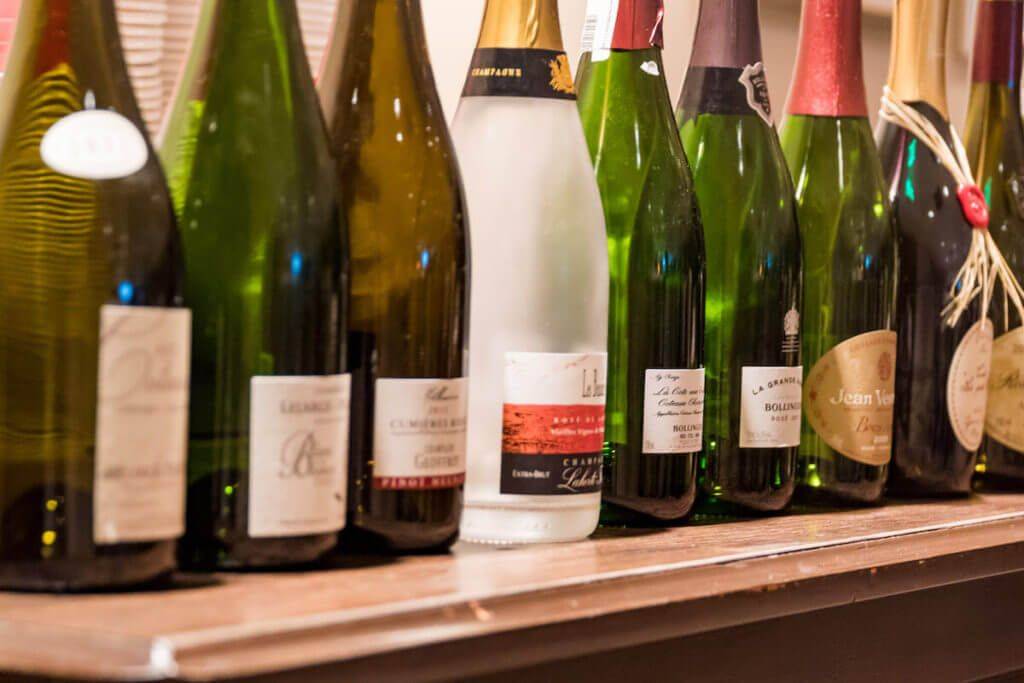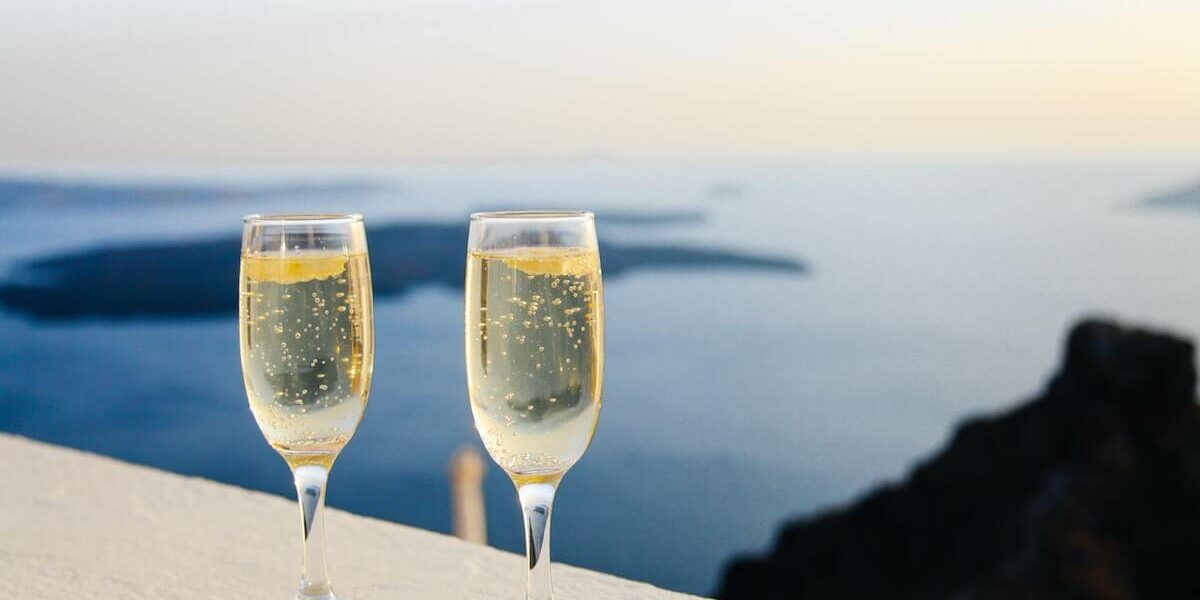by Alan Tardi
Most think of champagne as a sparkling wine, which is understandable because most of it is, but not all. In fact, champagne was born still and its transformation to sparkling was accidental.
The Champagne growing region is very far north in France, where post-harvest temperatures are often quite low and there is a natural tendency for fermentation to stop prematurely, before all the available sugar was converted to alcohol. Early winemakers were not aware this was happening, and assuming the wine was finished, put it into bottles or barrels and sent it off to market. In the spring when temperatures warmed, the yeast “woke-up” and fermentation resumed. In a closed container, the carbon dioxide, a natural by-product of fermentation, was trapped inside and diffused throughout the wine, creating bubbles.
Initially, this spontaneous second fermentation was viewed as a major flaw and some of the best minds in champagne—including Dom Perignon—spent the better part of their lives trying to find ways to prevent it. On the other hand, the English, who were major importers of champagne with a long tradition of making beer and cider, liked the bubbles and developed ways of intentionally inducing a second fermentation to make the wine sparkle.
Eventually, bubbly champagne became popular in France as well. So much so that the King of France gave special permission to transport champagne in bottles (all others had to be commercialized in barrels for tax purposes) and the Champenois diligently applied all of their efforts to perfecting the complex process it takes to produce it.

Sparkling champagne became an international sensation; completely overshadowing its still predecessor to the extent that most people don’t even realize it exists. Though its production represents a drop in the vast sea of effervescent champagne, the still wines of Champagne are still very much alive and kicking.
Originally known as “Vins natures de la Champagne,” the official appellation, Coteaux Champenois AOC, was created in 1974. Seven villages famous for their (still) wines long before champagne became bubbly—Aÿ, Bouzy, Cumières, Sillery, andVertus for red; Mesniland Chouilly for white—are permitted to list their names above the appellation on the label. However, Coteaux Champenois can be made from anywhere within the official Champagne growing area, in red, white or rosé versions, utilizing any of the seven approved grape varieties.
While many producers make Coteaux Champenois, they do so in very small quantities and few of them are exported. Many people, including some wine experts and Champenois themselves, look down upon Coteaux Champenois as an inferior, over-priced version of Burgundy—but not me.
I had my first Coteaux revelation at Bocal, a small restaurant in Reims, during one of my many visits while researching my book “Champagne, Uncorked”—a Coteaux Champenois Blanc Ludes Premier Cru by Bereche et Fils. While the 100% chardonnay fruit gave it body, it was also taut and tense, with racy acidity, chalky minerality, and a slight hint of pétillante—all of which screamed Champagne without the bubbles.
Coteaux Champenois are not cheap, but how could they be? These wines are made by the same producers of sparkling champagne and come from the same (extremely expensive) grapes that come from the same vineyards that could—and otherwise would—be used to make champagne. Moreover, while Coteaux don’t require the long maturation time and all the other labor-intensive steps that champagne does, it’s certainly not second-class wine or easy wine to make. Historically, market demand for Coteaux has been low, so producers make it solely because they feel compelled to do so. While the production process is more straightforward, there is no manipulation or adulteration involved, winemakers use only their best fruit and make it only in excellent years.

Though Champagne and Burgundy are neighbors, and both rely heavily on chardonnay and pinot noir, the two should not be compared on the same terms. While the still wines of Champagne typically have less body and structure and the reds are generally paler in color, they have a restraint, delicacy, and finesse that most wines from Burgundy do not.
Herein lies the most important point: still wines from Champagne and Burgundy are fundamentally different because they express different terroirs. A similar thing could be said about comparing the still and sparkling wines of Champagne except, in this case, the still wines express the same terroirs as the bubbly ones, but in fundamentally different ways.
This is precisely what The Flip Side of Champagne seminar at SommCon—offering five flights of two wines each, a Châteaux Champenois and a Champagne, from the same site, grape variety and producer—focused on. Though the still and sparkling expressions of growing area and grape variety were radically different, they were also mutually complementary, and the common threads between them were immediately evident. While the still version offered a pure unadulterated snapshot of grape and place that was quite enjoyable on its own terms, it also helped better understand and appreciate the additional dimension of effervescence and transformative effects of the Méthode Champenoise, with its long sur lie aging. Moreover, the still version underscored what is probably the most significant offshoot of the current Champagne renaissance: with bubbles or without, champagne in first and foremost a wine, reflective of a grape (or grapes), a unique, complex, diverse terroir, and the people that make them.
© Alan Tardi
About Alan Tardi: Alan Tardi initially became interested in wine while working as a cook and chef in some of New York’s finest establishments. After opening his own restaurant in 1992, Alan began sitting in on panel tastings at the nearby offices of Wine and Spirits and eventually began writing for the magazine. This developed into a career as freelance journalist authoring numerous articles about wine and food for publications including New York Times, Wine Spectator, Decanter, Sommelier Journal, Food Arts, Snooth.com, as well as Wine and Spirits.

